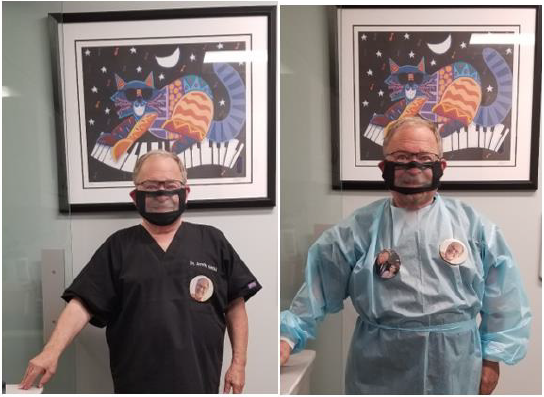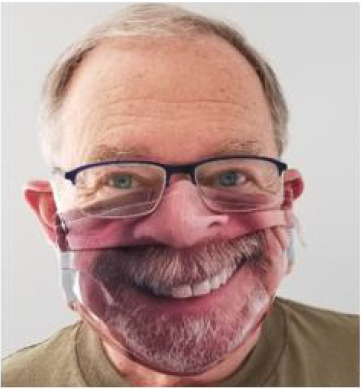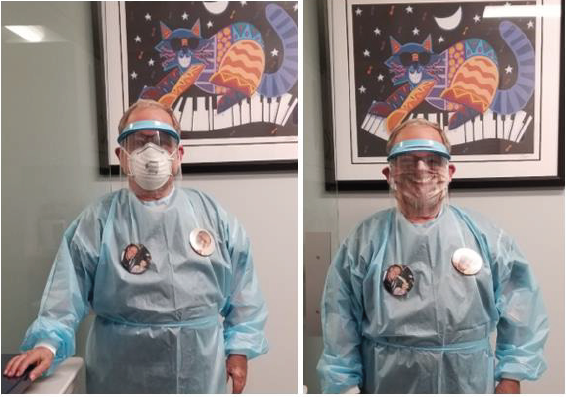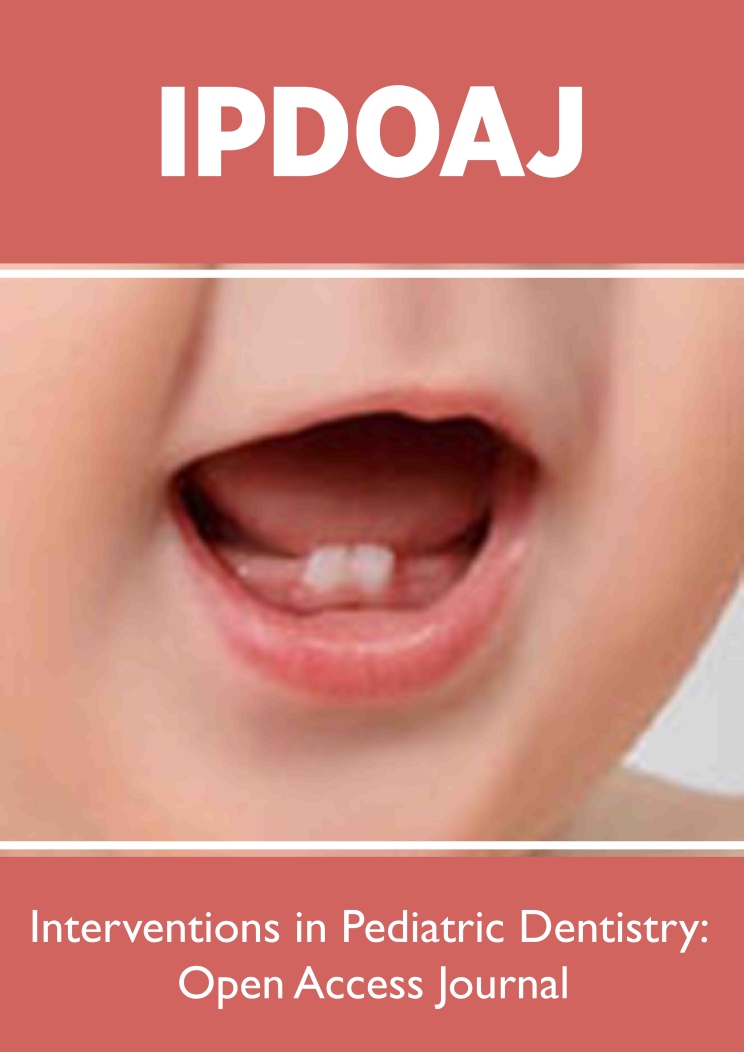
Lupine Publishers Group
Lupine Publishers
Menu
ISSN: 2637-6636
Short Communication(ISSN: 2637-6636) 
The New Normal in Caring for Children in the Dental Office Volume 5 - Issue 3
Arnold Weiss*
- Department of Pediatric Dentistry, Tufts University School of Dental Medicine, USA
- Private practice of Pediatric Dentistry, Brookline, MA, USA
Received:January 04, 2021; Published: January 12, 2021
*Corresponding author: Arnold Weiss DDS, MScD, Department of Pediatric Dentistry, Tufts University School of Dental Medicine, USA
DOI: 10.32474/IPDOAJ.2021.05.000212
Short Communication
The Coronavirus has thrown everyone for a loop. Families and children, people of all ages, and businesses have had to scramble for ways to deal with this unparalleled pandemic. Pediatric dental practices have been affected as much or even more losing most of our hands-on, face to face, fun approaches we take in connecting with children and their parents. In the past, we welcomed children into our reception areas to play, and to be around their families and other kids in a child friendly setting. Most, if not all of that, is gone. Families are checked in by phone; they fill out the paperwork and pay electronically; they are limited in coming into the office; they wait in their car. Parent and children cannot see the smiling faces of the administrative and clinical teams. We are anonymous. There are no games to play. There is no time to get adjusted to the office. All that stuff has been taken away because anything they can play with is a possible source of infection. We have to social distance They go directly from their cars to the treatment rooms and home. No high fives smiles and hugs.
Our reception area with books, kids’ games, video games, blocks, etc., is gone. Their ability to roam around is gone. There’s little entertainment. The entertainment we have require us to clean, wipe down or have sanitation techniques to clean and be safe. All of this makes us less effective. We want the kids to have a great time, like us, trust us and enjoy their visits. Our open bays are at risk of being removed. We are restricting where families go, and the number of patients, parents and family members that are allowed in an operator, and in the office at a time. We need to work on these items. While many adults have preconceived impressions of a dental visit with their own anxieties, children are a clean slate. Having no knowledge of what the visit entails is a plus for pediatric dentists. We can make it a fun museum-like experience. One area that is challenging for all dental practices this year is the mandate
for new and more extensive PPE. While the goal is to protect staff and patients, the new look can be disconnecting, especially for children. We have to constantly wear our PPE in the office and seem anonymous.
Wielding instruments, wearing face masks, face shields, goggles, surgical hats, gloves, and disposable gowns can seem impersonal and scary. With a little ingenuity, we can make it part of the fun experience we want to maintain and manage infection control concerns. Many people think it’s harder for younger children to adapt to this new normal. They think they don’t really understand why the world is doing this, and that we’re wearing face shields, N95s, and a disposable gown for each visit. Kids really understand more than we give them credit for. They have gotten used to masks and “cleanliness,” and when we reopened our offices, we focused much more on the infection control (which is crucial), and less on how to convey what’s going on to the children. One solution I’ve tried is to start slower. At the door to the operatory, I greet them in my scrubs wearing a pin of my face smiling, wearing a lip-reading mask so they can see my smile.
I ask them to pick out a sticker/toothbrush, and escort them to the chair. Then, my assistant helps me on with my gown, which has two pins, one of me smiling and another with a young patient and me smiling (Figure 1). I then take a toothbrush, brush their fingers, and add a face shield. I do Tell, Show, Do, that is appropriate for the age and procedure. As in the past, I anticipate what I will use and have them touch and participate with me in a fun teaching type situation. I brush their fingers with the toothbrush. I spin their fingers with the prophy angle. I let them catch the bubbles from the dappen dish. Nothing in their mouth. I then add the remainder of my PPE and continue the same in their mouths in a playful manner. If that is done, they see you’re incrementally adding PPE, they still see your smile and know who is behind all that protection. They can see who I am a person underneath (Figure 2). For restorative I add
a N95 mask, and over it a mask with my face on it. They see my face,
my smile, my lips, and hear me, they just don’t see my lips moving
(Figure 3). I proceed to continue as in the past and perform my
dentistry. Electronic reminders, check-ins, and screening tools have
all been easier to integrate, and they’ve been very well-received by
most of our patients. Electronic records and radiographs have been
very helpful both for clinicians and administrative team members.
Connecting with patients and explaining the risk factors associated
with COVID can be challenging.
We need to educate our parents that:
a) We have always adhered to the highest levels of infection
control in our offices.
b) We have made more changes to protect our patient
families and our team.
c) We are taking histories and temperatures on all who enter
the office.
d) We have barriers placed in all administrative areas.
e) We added hepa filters to our HVAC.
f) We have air cleaners in all areas of our office to filter and
change the air over quickly.
g) As we previously did, we heat sterilize ALL instruments
and thoroughly disinfect all counters, chairs, etc., in our
treatment areas.
h) We care for our patients and always uphold the highest
infection control standards.
In this anonymous world of COVID-19 it’s important to pivot,
reinvent ourselves, and the way we connect with our kids.
Editorial Manager:
Email:
pediatricdentistry@lupinepublishers.com

Top Editors
-

Mark E Smith
Bio chemistry
University of Texas Medical Branch, USA -

Lawrence A Presley
Department of Criminal Justice
Liberty University, USA -

Thomas W Miller
Department of Psychiatry
University of Kentucky, USA -

Gjumrakch Aliev
Department of Medicine
Gally International Biomedical Research & Consulting LLC, USA -

Christopher Bryant
Department of Urbanisation and Agricultural
Montreal university, USA -

Robert William Frare
Oral & Maxillofacial Pathology
New York University, USA -

Rudolph Modesto Navari
Gastroenterology and Hepatology
University of Alabama, UK -

Andrew Hague
Department of Medicine
Universities of Bradford, UK -

George Gregory Buttigieg
Maltese College of Obstetrics and Gynaecology, Europe -

Chen-Hsiung Yeh
Oncology
Circulogene Theranostics, England -
.png)
Emilio Bucio-Carrillo
Radiation Chemistry
National University of Mexico, USA -
.jpg)
Casey J Grenier
Analytical Chemistry
Wentworth Institute of Technology, USA -
Hany Atalah
Minimally Invasive Surgery
Mercer University school of Medicine, USA -

Abu-Hussein Muhamad
Pediatric Dentistry
University of Athens , Greece

The annual scholar awards from Lupine Publishers honor a selected number Read More...







